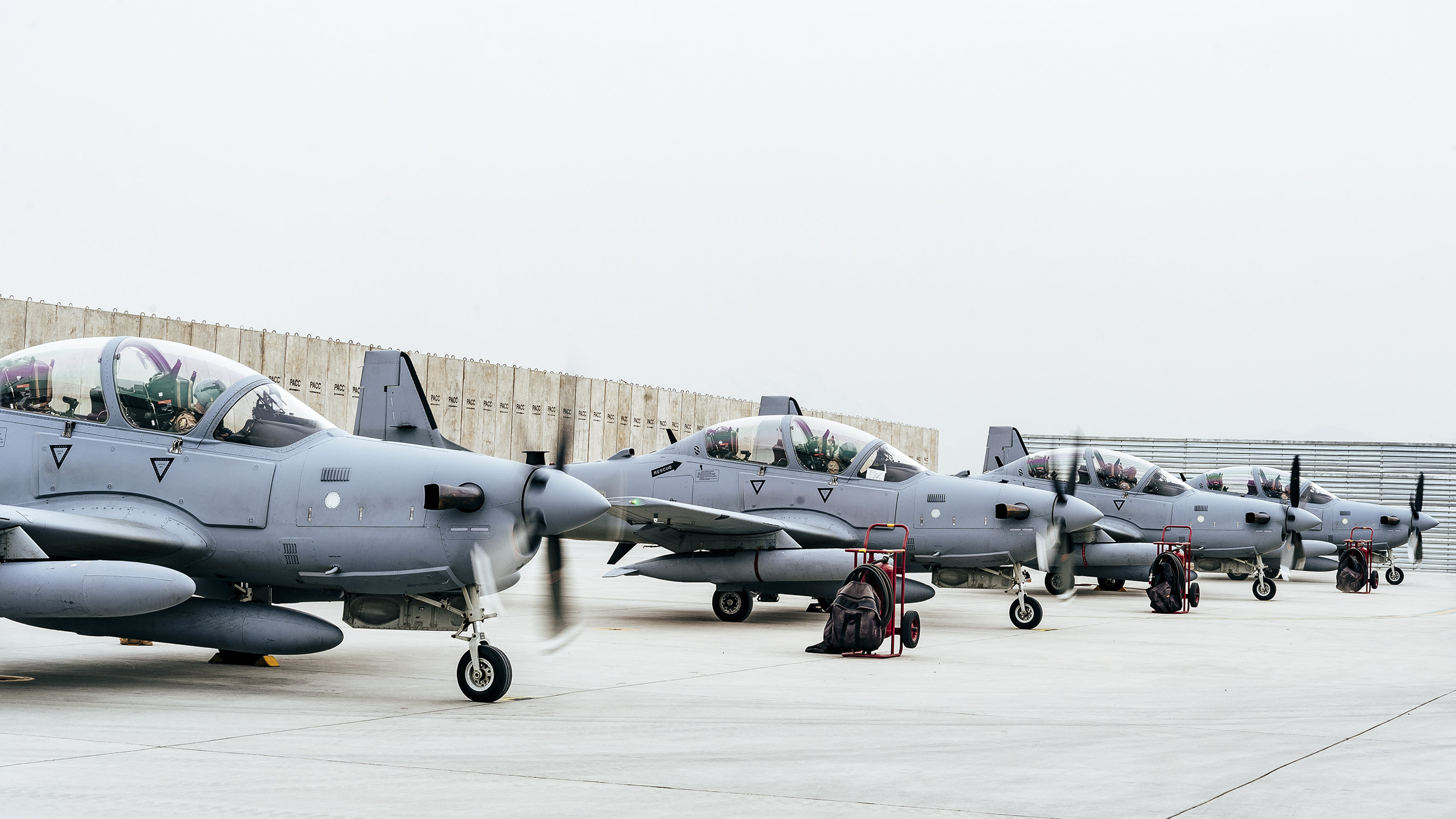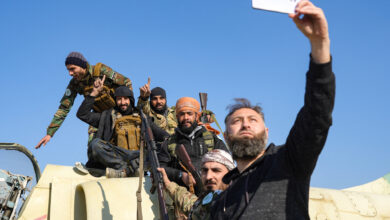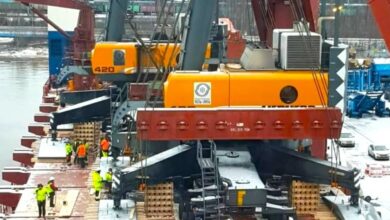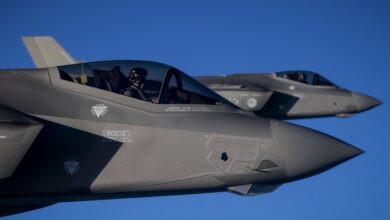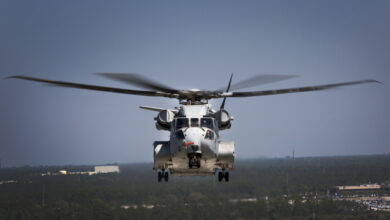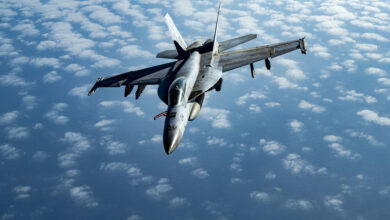Nigerian Air Force A-29 Super Tucanos look set to be based at Kainji in the west of the country, according to a notice posted on the U.S. Federal Business Opportunities website.
The news comes as the Nigerian Air Force says it expects 18 new aircraft to be inducted into service in 2020, including 12 A-29s.
The FedBizOpps notice, first reported by Jane’s, was posted on April 18 by the U.S. Army Corps of Engineers Europe District, as “part of a market research effort to gather information for planning purposes” for construction projects related to the “A-29 Program Beddown” at Nigerian Air Force Base Kainji, outside New Bussa in Niger state.
Solicitations are expected to be announced in January 2020, and Design-Bid-Build contracts with a combined value between $25 million and $100 million could be issued.
Kainji, around 100 km (60 miles) from the border with Benin, is currently home to the 407 Air Combat Training Group.
Three construction projects “which in sequence will fulfill the needs and requirements of the program” are listed in an accompanying document.
The “Critical Facilities Package” includes conversion of an existing runway hammerhead into a temporary arm/de-arm location, retrofitting a parking apron to a tie-down and grounding area, and providing temporary structures for aircraft and secure storage.
A “Security Package” includes the construction of a new 12 km chain link perimeter fence, a munitions storage area including an observation tower and lighting, improvements to the two base entry control points and the construction of a permanent arm/de-arm pad.
The “Operations Package” includes the renovation of an existing aircraft hangar and air traffic control tower, configuration of a new simulator training room, and renovation of an aircraft parking apron.

A-29s for Nigeria
U.S. A-29s are built in Jacksonville, Florida in a partnership between Sierra Nevada Corporation and Brazil’s Embraer, the designer of the aircraft which it designates EMB 314.
A durable and flexible two-seat aircraft designed for counter-insurgency and close air support roles, the A-29 Super Tucano can also be used for reconnaissance missions in low-threat environments, and for pilot training.
Powered by a variant of the Pratt & Whitney Canada PT 6, the A-29 is capable of operating from unimproved runways, and can be equipped with advanced avionics, an electro-optical, infrared and laser targeting system, as well as communications and datalinks to enhance its combat capability.
The Super Tucano is relatively cheap to buy, fly and maintain, costing from around $18 million each depending on configuration and about $1,000 per flying hour, according to The Diplomat.
Nigeria’s acquisition of A-29s was initially proposed in May 2016, but was put on hold by then-President Barack Obama after the Nigerian Air Force ‘mistakenly’ bombed a refugee camp in January 2017. The Trump administration decided to re-activate the deal in April 2017.
An estimated $593 million sale of A-29s to Nigeria approved by the U.S. State Department in August 2017 included 12 A-29s, weapons, training, aviation and ground support equipment, hangar, facilities, and infrastructure.
The Defense Security Cooperation Agency said at the time the sale was to support Nigerian counter-insurgency operations against Islamic State West Africa Province and Boko Haram, as well as “efforts to counter illicit trafficking in Nigeria and the Gulf of Guinea,” the latter perhaps reflected in the choice of Kainji as a base for the aircraft.
However, Kainji is more than 1,000 km west of the Lake Chad area in Borno state, the epicenter of the ISWAP insurgency. The A-29 has a combat radius of around 550 km, suggesting perhaps that Kainji may act primarily as a training base, and that another base further east could be employed for counter-insurgency operations.
In January 2018, Defence Minister Mansur Dan Ali highlighted government concerns over a 2020 transfer date, with Nigeria wanting the aircraft sooner. The government was also reportedly unhappy that Nigerian technicians would not be trained or be part of maintenance crews, nor could they study the aircraft’s production. It is unclear how this has been resolved.
Expeditious delivery was still high on the agenda in August 2018, when Nigeria’s Chief of the Air Staff, Air Marshal Sadique Abubakar, appealed directly to Taco Gilbert, the Senior Vice President of Sierra Nevada Corporation, while he was on a visit to Abuja. Abubakar reportedly pushed for the early delivery of at least two aircraft for use in ongoing counter-insurgency operations.
That urgency could be a reflection of the A-29’s increasingly important role in counter-insurgency operations in Afghanistan.
In November 2018, a contract was awarded to Sierra Nevada for 12 A-29 Super Tucano light attack aircraft for the Nigerian Air Force valued at up to $345 million.
The contract includes ground training devices, mission planning and debrief systems, ground support equipment, alternate mission equipment, as well as contractor support including five field service representatives outside of the continental U.S. for three years. Work is expected to be completed by May 2024.
According to Nigeria’s Premium Times, President Muhammadu Buhari placed the order in April 2018, and the government transferred more than $460 million to the U.S., more than $100 million more that the Sierra Nevada contract, and potentially including the Kainji works or weapons for the aircraft.
The notification of the potential A-29 sale delivered to the U.S. Congress in 2017 included 5,000 Hydra 70 2.75-inch unguided rockets, 400 Laser Guided Rockets including the Advanced Precision Kill Weapon System (APKWS), 200 Paveway II laser-guided bomb tailkits and 2,000 MK-81 250-lb bombs and machine gun ammunition.
In December, Brigadier General Sean Farrell, Director of the U.S. Air Force Security Assistance and Cooperation Directorate, reportedly assured Nigerian Air Force personnel of a timely delivery of the A-29s. While in Nigeria, U.S. personnel visited an unknown air base where the aircraft would be stationed, Vanguard reported.

Nigeria grows air force fleet
On April 23, Air Commodore Nnamdi Ananaba said that the Nigerian Air Force will acquire an additional 18 aircraft by 2020, Today.ng reported.
The planned acquisitions that Ananaba said “are either expected soon or have been paid for and are expected to be inducted into service in 2020” include the 12 A-29 Super Tucanos, one Mil Mi-35M attack helicopter, one Leonardo AW139 helicopter and four Leonardo AW109 helicopters.
On April 22, the Chief of the Air Staff Abubakar announced that the NAF had taken delivery of two AW109 Power “attack helicopters” which were being assembled for induction during the forthcoming 2019 NAF Day Celebration which takes place in Abuja between April 27 and 29. This year’s event marks the service’s 55th anniversary.
Abubakar said in December that the NAF was to receive six AW109s in total.
It is unclear which variant of the AW109 was delivered, although Abubakar previously described them as gunships, suggesting the AW109M military variant which can be fitted with machine-gun pods and 70mm rocket launchers.
Photographs of one of the aircraft delivered to Nigeria (NAF 576) that were taken in Italy earlier in April do not appear to show external weapons pods fitted. Nigeria currently operates the AW109 LUH Light Utility Helicopter, a military variant based on the civilian AW109 Power, but Leonardo has rebranded its AW109 range, and the Power variant seems unavailable.
Ananaba said that over the last three years, the NAF has taken delivery of 10 Pakistan-made Super Mushshak primary trainer aircraft, as well as four Mi-35M and two Bell 412 utility helicopters, and that 14 grounded aircraft had been reactivated.
“The NAF has winged 90 pilots in the last three years, while 68 others are in training both at home and abroad,” Ananaba added.

